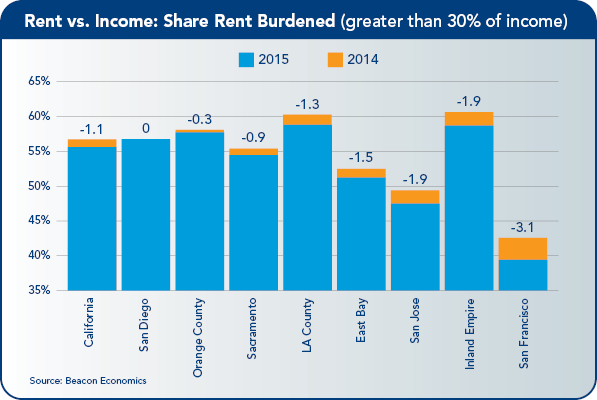California has good reason to be concerned about the moves afoot in Washington, according to the latest quarterly report from the California Chamber of Commerce Economic Advisory Council.
The political-economic environment went from unsettling in the aftermath of the November election to disruptive when President Donald Trump assumed the Oval Office, as the new president moved with lightning speed to sign a string of executive orders that embodied his campaign promises.
The administration soon discovered that signing an executive order is easy compared to execution, at which stage it must answer to the U.S. Congress, the courts and the states.
California’s Trade Ties
As home to the two largest ports in the Western Hemisphere, a number of other ports and airports that engage in foreign trade, not to mention significant ports of entry on the California-Mexico border, the state economy is hardwired to the rest of the world.
The administration’s decision to withdraw from the Trans-Pacific Partnership (TPP), along with its stated goals of renegotiating the North American Free Trade Agreement (NAFTA) and getting tough on trade with China all have significant implications for California’s transportation and logistics industry, not to mention its exports of services, notably intellectual property in the form of creative content that comes out of Hollywood and other parts of the state.
Regarding the TPP, many of the signatory nations have substantial trade relationships with California and its businesses. This pact would have strengthened these relationships by reducing trade barriers while adding more worker and intellectual protections than in past agreements, thereby reducing friction among nations that are already engaged in vibrant international trade activity.
At a minimum, pulling out of the TPP equates to forgone opportunities on the part of California businesses. As for NAFTA and the U.S.-China trade relationship, the Trump administration has not yet announced any concrete plans, but significant changes could be disruptive to California businesses. More generally, any efforts on the part of the administration to raise tariffs (including a “border tax”) would almost certainly lead to higher prices for California consumers as well as businesses.
Disruption
The Trump administration’s desire to secure the nation’s borders through a travel ban and greater restrictions on immigration also will be disruptive to California’s businesses and its residents.
Efforts to limit immigration have the potential to exact significant damage upon the state’s industries. This is not to say that the nation’s immigration problems should be ignored. Rather, the nation and California are in dire need of a rational immigration policy that acknowledges the importance of immigrants to many vital industries and the broader economy.
State leaders will need to ensure that decisions in Washington neither trip up the California economy nor work against its businesses and residents.
Slower Growth Ahead
California’s economy behaved much like the nation’s as it moved through 2016. In January 2016, California registered a 2.8% year-over-year growth rate in wage and salary jobs; by December the growth rate slipped to 2.0%.
Meanwhile, the unemployment rate finished the year at 5.2%, down from 5.9% one year earlier, but moving sideways in the second half of the year as the labor force surged with the largest number of entrants to the California labor force since the Great Recession.

Housing Outlook Mixed
The picture for housing has been mixed in recent years, with prices advancing modestly despite hurdles that have limited sales activity. Outside of the San Francisco Bay Area, home prices have yet to surpass their pre-recession peaks. Demand for homes has been sustained by low interest rates, but also has been impeded by limited inventories, high underwriting standards, and large down payment requirements.
Meanwhile, the rental market will offer little relief as renters face yet another year of rent hikes, prompting concern about affordability in many communities around the state.


Statewide Policy Issues
The year ahead should bring continued growth in economic activity and jobs, with the largest contributions to employment coming from health care, leisure and hospitality, and professional services. The labor force will continue to edge up, but job growth will absorb these entrants with the unemployment rate edging down over the year.
As if the challenges brought on by the new administration in Washington are not enough, California has its own home-grown issues. As mentioned earlier, housing affordability continues to garner attention, both with respect to owner-occupied housing and rentals.
Water Problems
California continues to deal with water problems. Recent rains and snowfall have ended the severe drought conditions in most, but not all, parts of the state. They have also directed collective attention to another challenge: infrastructure.
The state and its regions must do more to ensure that the all-important statewide water system, which ties north to south and inland California to coastal California, will be up to the task in the future.
U.S.: The Unknown Unknowns
The U.S. economy has started 2017 with two distinctly opposing trends forming in terms of the outlook for the year. On one hand, the economy is clearly starting to pick up momentum after a slow year of growth in 2016.
On the other hand, the policy uncertainties created by the surprise election of Trump to the presidency have only become worse. The net result is that while Beacon Economics’ point estimate for growth has been moved up a notch, the range of variance around the estimate is also widening.
Momentum Indicators
There are plenty of other indicators that the U.S. economy is gathering momentum. December’s industrial production estimate from the Federal Reserve saw the first year-over-year growth since 2015.
Also significant is the nation’s increasingly tight labor market. In other words, President Donald Trump is fortunate to have inherited the strongest economy in the last decade.
Nonexisting Problems
Unfortunately for the President, Candidate Trump ran on a platform that emphasized, not economic strength, but profound weakness. From trade to regulations to immigration to taxes, Trump created straw men to blame for problems that don’t actually exist in the nation.
He has proposed sweeping changes—most of which, by definition, cannot deliver the promised positive effects. The primary impacts of these proposed policy shifts will largely be confined to what economists refer to as the “law of unintended consequences”—the secondary negative impacts that accompany a shift in policy, but are not intended.
Years-Long Task
While waste certainly exists in the federal system, it is unlikely to be nearly large enough to offset broad tax cuts, and in any case, finding and implementing solutions would take years to accomplish, at best
First-Month Signs
Is it time to pull the rip cord and get out? Probably not. Although the policy promises of the current administration appear to be more dangerous than helpful, what’s occurred during just the first month of this administration begs the question as to whether anything will get done at all.
If there were a well-defined direction in policy, even if the policies are unwise, it would allow for some clarity on the direction of the economy. But the chaos in this administration leaves us, as forecasters, with little idea as to what might actually occur. As we move through the year, beware the unknown unknowns.


